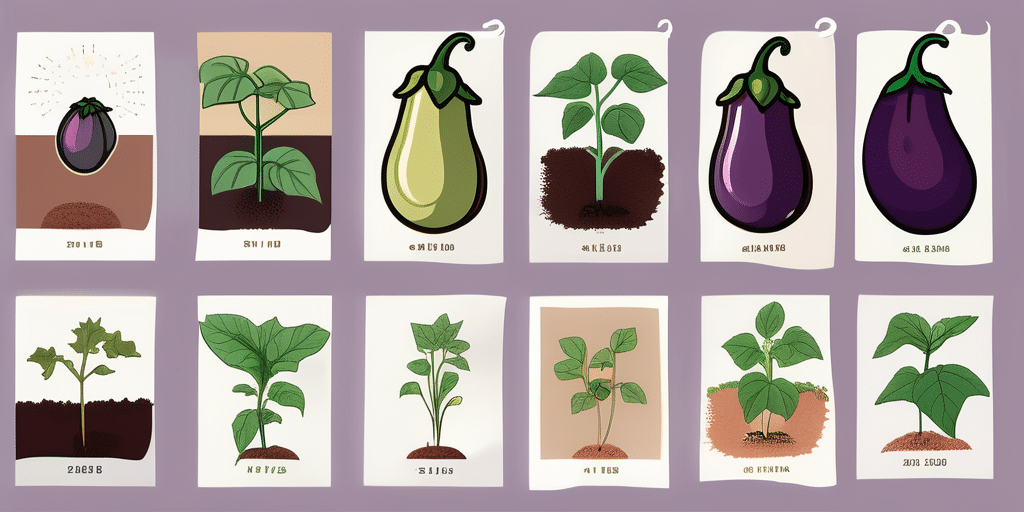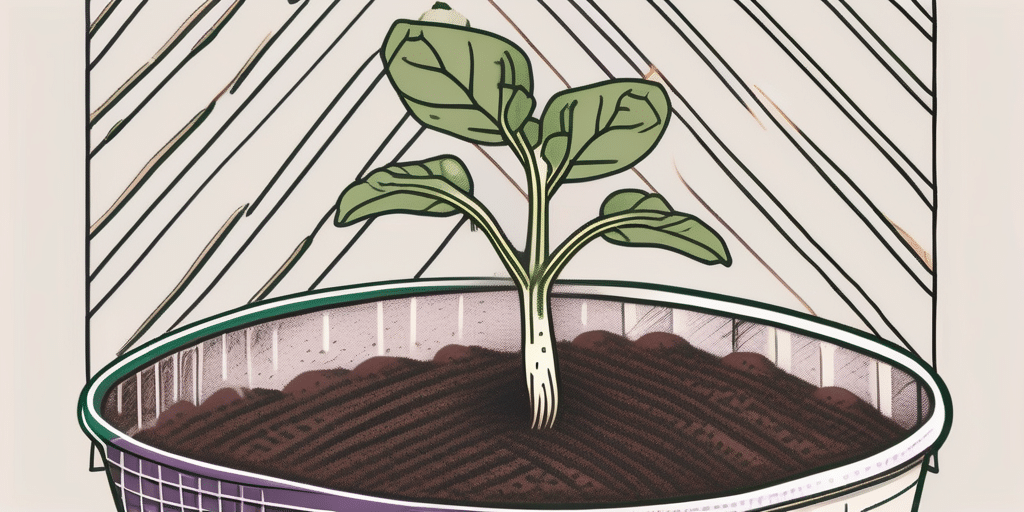If you’re a fan of eggplant and live in Zones 7a and 7b, then you’re in luck! The Kamo eggplant is a tasty variety that is well-suited to these specific gardening zones. In this article, we will explore everything you need to know about growing Kamo eggplant in Zones 7a and 7b, including when to plant and how to grow this delicious vegetable.
Growing Kamo Eggplant in Zones 7a and 7b
Before we dive into the details, let’s take a moment to understand the climate and hardiness of Zones 7a and 7b. These zones are characterized by mild winters and hot summers, making them ideal for growing a wide variety of crops, including eggplant. Kamo eggplant, in particular, thrives in these conditions due to its ability to tolerate both heat and cold.
When it comes to planting Kamo eggplant in Zones 7a and 7b, it’s crucial to choose the right time. The optimal time for planting is in the spring when the soil has warmed up and the danger of frost has passed. This usually occurs around late March to early April in these zones. By planting at the right time, you’ll give your eggplants the best chance of success.
When to Plant Kamo Eggplant in Zones 7a and 7b
To determine the precise planting date for Kamo eggplant in Zones 7a and 7b, it’s essential to consult your local agricultural extension office or trusted gardening resources. They will have specific information about your region, taking into account any microclimates or unique conditions that may affect planting times.
While Kamo eggplants are known for their hardiness, it’s still important to provide them with optimal growing conditions. Like other members of the nightshade family, eggplants thrive in full sun and well-drained soil. It’s also advisable to prepare the soil by incorporating compost or organic matter to improve its fertility and structure.
When to Harvest or Pick Kamo Eggplant in Zones 7a and 7b
Once your Kamo eggplants have been successfully planted and cared for, it’s only a matter of time before they are ready to be harvested. The timing of harvest depends on various factors, including the specific variety of Kamo eggplant you’re growing and your personal preferences for ripeness.
Generally, Kamo eggplants are ready for harvest between 70 to 80 days after transplanting. Look for firm, glossy fruits with a deep purple color. Avoid harvesting eggplants that are overripe, as they may be bitter and less enjoyable to eat.
To harvest Kamo eggplant, simply use pruning shears or a sharp knife to cut the stem about an inch above the fruit. Be careful not to damage the plant or neighboring fruits during the process. Once harvested, you can store Kamo eggplants in a cool, dry place or use them immediately in your favorite eggplant recipes.
Now, let’s talk about some common pests and diseases that can affect Kamo eggplants in Zones 7a and 7b. One of the most common pests is the eggplant flea beetle, which can cause significant damage to the leaves and stems of the plant. To prevent infestations, it’s advisable to use floating row covers or apply organic insecticides.
In terms of diseases, Kamo eggplants are susceptible to fungal infections such as verticillium wilt and powdery mildew. To prevent these diseases, it’s important to practice good sanitation in the garden, such as removing any infected plant debris and avoiding overhead watering. Additionally, choosing disease-resistant varieties can help minimize the risk of infection.
Frequently Asked Questions
Now that we’ve covered the basics of growing Kamo eggplant in Zones 7a and 7b, let’s address some frequently asked questions to provide further guidance.
Q: Can I grow Kamo eggplant in containers?
A: Yes, Kamo eggplants can be successfully grown in containers as long as you provide them with a large enough pot and proper care. Choose a container that is at least 18 inches deep and wide to accommodate the plant’s root system. Ensure the container has drainage holes to prevent waterlogging.
Q: Do Kamo eggplants require staking or support?
A: While Kamo eggplants have sturdy stems, they can benefit from staking or support to prevent the heavy fruit-laden branches from bending or breaking. Use stakes or trellises to provide support, especially in windy areas.
Q: How do I control pests and diseases when growing Kamo eggplant?
A: Like most vegetables, Kamo eggplants are vulnerable to pests and diseases. To prevent infestations, practice good garden hygiene, such as removing weeds and debris that can harbor pests. Monitor your plants regularly and take action at the first sign of trouble. Organic pest control methods, such as handpicking insects or using insecticidal soaps, can be effective. If necessary, consult your local agricultural extension office for specific pest and disease management recommendations.
Q: Can I save seeds from Kamo eggplant for future planting?
A: Yes, you can save seeds from Kamo eggplant for future planting. Allow the fruits to fully ripen and mature on the plant before harvesting. Scoop out the seeds, rinse them to remove any residual pulp, then dry them thoroughly before storing in a cool, dry place.
We hope this article has provided you with valuable information on growing Kamo eggplant in Zones 7a and 7b. By following the guidelines and tips mentioned, you’ll be well on your way to enjoying a bountiful harvest of this delicious vegetable. Happy gardening!
Now, let’s delve deeper into the topic of container gardening for Kamo eggplants. Growing Kamo eggplants in containers can be a convenient and space-saving option, especially for those with limited garden space. Not only does it allow you to grow these delicious eggplants in smaller areas, but it also provides the flexibility to move the plants around to optimize sunlight exposure.
When choosing a container for your Kamo eggplants, opt for one that is made of a durable material, such as plastic or terracotta. These materials are lightweight, easy to clean, and provide good insulation for the roots. Additionally, make sure the container has sufficient drainage holes to prevent water from pooling at the bottom, which can lead to root rot.
Now, let’s move on to the topic of providing support for your Kamo eggplants. While these eggplants have sturdy stems, they can still benefit from some extra support, especially when they start producing heavy fruit. By providing stakes or trellises, you can help prevent the branches from bending or breaking under the weight of the fruit. This not only ensures the health and longevity of your plants but also makes harvesting easier and more convenient.
Join the How to Grow Everything Community
Ready to take your gardening skills to the next level? Subscribe for free to How to Grow Everything and learn how to build the garden of your dreams! Whether you’re a beginner or an experienced green thumb, you’ll get personalized gardening advice tailored to your location, grow zone, and interests. Enjoy the best gardening tips, special offers, and insights—100% free, direct to your inbox. No spam, just valuable content from our family to yours. With thousands of free growing and gardening articles at your fingertips, your Kamo eggplants will be just the start of your horticultural success. Subscribe now and let’s grow together!




